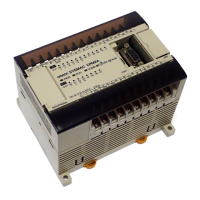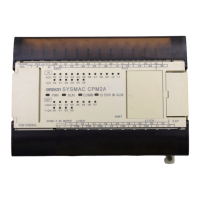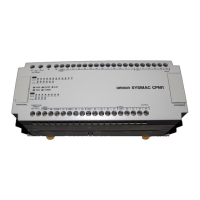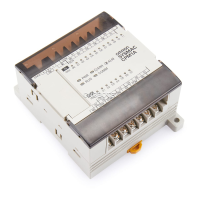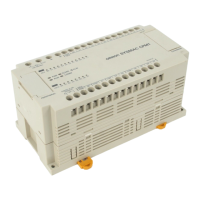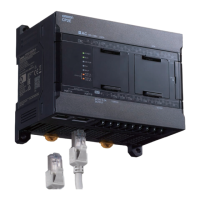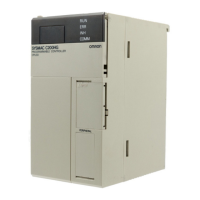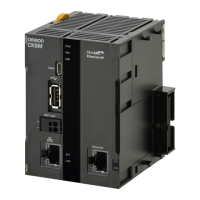3
CPM2C Features and Functions Section 1-1
Built-in Motor Control Capability
Synchronized Pulse
Control
(Transistor Outputs Only)
Synchronized pulse control provides an easy way to synchronize the opera-
tion of a peripheral piece of equipment with the main equipment. The output
pulse frequency can be controlled as some multiple of the input pulse fre-
quency, allowing the speed of a peripheral piece of equipment (such as a sup-
ply conveyor) to be synchronized with the speed of the main piece of
equipment.
High-speed Counters and
Interrupts
The CPM2C has a two kinds of high-speed counter inputs. The high-speed
counter input has a response frequency of 5 or 20 kHz and the interrupt inputs
(in counter mode) have a response frequency of 2 kHz.
The single high-speed counter can be used in any one of the four input
modes: differential phase mode (5 kHz), pulse plus direction input mode
(20 kHz), up/down pulse mode (20 kHz), or increment mode (20 kHz). Inter-
rupts can be triggered when the count matches a set value or falls within a
specified range.
The interrupt inputs (counter mode) can be used for incrementing counters or
decrementing counters (2 kHz) and trigger an interrupt (executing the inter-
rupt program) when the count matches the target value. Four interrupt inputs
can be used in the 20- and 32-point CPU Units and two interrupt inputs can be
used in the 10-point CPU Units.
Easy Position Control with
Pulse Outputs
(Transistor Outputs Only)
CPM2C PCs with transistor outputs have two outputs that can produce 10 Hz
to 10 kHz pulses (single-phase outputs).
When used as single-phase pulse outputs, there can be two outputs with a
frequency range of 10 Hz to 10 kHz with a fixed duty ratio or 0.1 to 999.9 Hz
with a variable duty ratio (0 to 100% duty ratio).
When used as pulse plus direction or up/down pulse outputs, there can be
just one output with a frequency range of 10 Hz to 10 kHz.
High-speed Input Capabilities for Machine Control
High-speed Interrupt Input
Function
The 20-point and 32-point CPU Units have 4 inputs that can be used as inter-
rupt inputs and the 10-point CPU Units have 2 inputs that can be used as
interrupt inputs. These inputs are shared with quick-response inputs and inter-
rupt inputs in counter mode and have a minimum input signal width of 50
µs
and response time of 0.3 ms. When an interrupt input goes ON, the main pro-
gram is stopped and the interrupt program is executed.
Quick-response Input
Function
Regardless of the cycle time, the 20-point and 32-point CPU Units have 4
inputs that can be used as quick-response inputs and the 10-point CPU Units
have 2 inputs that can be used as quick-response inputs. These inputs are
shared with interrupt inputs and interrupt inputs in counter mode; they can
reliably read input signals with a signal width as short as 50
µs.
Stabilizing Input Filter
Function
The input time constant for all inputs can be set to 1 ms, 2 ms, 3 ms, 5 ms,
10 ms, 20 ms, 40 ms, or 80 ms. The effects of chattering and external noise
can be reduced by increasing the input time constant.
Encoder
CPM2C
Motor driver
Motor
Pulses are out
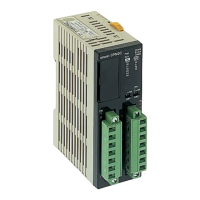
